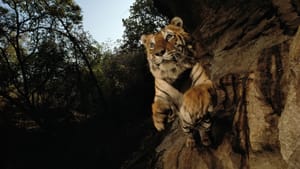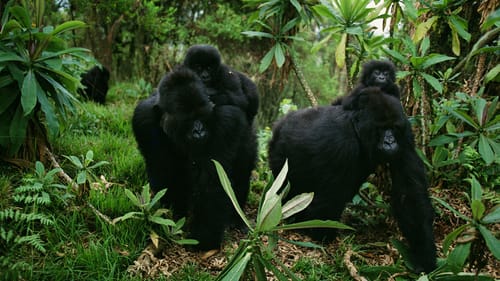Stay in the Loop
BSR publishes on a weekly schedule, with an email newsletter every Wednesday and Thursday morning. There’s no paywall, and subscribing is always free.
Mild kingdom
Philadelphia Museum of Art presents 'Wild: Michael Nichols'

The Philadelphia Museum of Art’s (PMA) Wild: Michael Nichols is an exemplary show for a major art museum in the 21st century. It’s exemplary, yes — but not very satisfying.
Art-museum outreach
Nichols, a renowned wildlife photographer as well as a zealous advocate of habitat and species preservation, is also one brave dude. He ventures into the world’s most remote, forbidding, and dangerous environments. He's also an admired technical innovator whose experiments and inventions have made possible images that were previously unthinkable.
But Nichols is not an important artist.
That isn’t the point PMA really wants to make, though the institution tries to have it both ways. Mounting a huge exhibition of oversized wildlife prints may draw a broader audience than the usual sanctified works of, say, Impressionism or 17th-century Holland. Think of this exhibition as part of PMA’s new outreach program, intended to encourage visitors not normally disposed to visit traditional art museums, who can attend and find immediately accessible works. Nichols’s photography certainly possesses those qualities, but it is not particularly challenging intellectually or rewarding aesthetically.
Art vs. advocacy
Documentary or advocacy photography has had a long, sometimes tenuous relationship to the traditional art worlds of painting and sculpture. Today, however, Walker Evans, Eugene Atget, or Sebastião Salgado, among many, are revered, exhibited, and collected. All made photographs on assignment or for commercial purposes that were later divorced from their original contexts and displaced into the museum or gallery. Their entry into the pantheon of artists is secure, yet few viewers regard their work on its original terms: documenting the Farm Security Administration (Evans), making documents to sell to artists (Atget), or documenting the gold-mining industry (Salgado).

As if to lend further credence to the notion that Nichols’s work fits into that broader tradition, PMA shows several paintings and sculptures from its own collection alongside the photographs. Among these are Edward Hicks's "The Peaceable Kingdom," Henri Rousseau’s "The Merry Jesters," and Tommy Dale Palmore’s "Reclining Nude." Yet none of these works is rooted in advocacy, cataloguing, or the making of documents. (Interestingly, one need only walk down the hall from the Nichols exhibition to the concurrent, magnificent show Witness: Reality and Imagination in the Prints of Francisco Goya to recognize where documentation ends and art begins.)
Aesthetically, Nichols’s work is flat. Big cats leaping toward a lens are dramatic and images of orphan elephants covered by handlers in protective clothing evoke sympathy, but they do not excite the imagination the way Rousseau’s dreamy invented landscapes inhabited by odd creatures do. Nor do his photographs exhibit the spiritual origins of Hicks’s biblically inspired painting, in which the leopard, kid, and children “lie down” together in harmony. Instead, Nichols gives us a pride of lions devouring their prey as a matter-of-fact statement about survival. And the high irony of Palmore’s "Reclining Nude," a huge ape assuming the pose of a classical nude, appears diametrically opposed to Nichols’s unambiguous photographs of apes.
Photographs of Jane Goodall, monkeys, and apes seek to educate and inform. The series on elephants depicts the dire conditions created by poachers, who have imperiled the population of wild elephants despite efforts to stop this illegal practice. Nichols reaches the viewer emotionally, challenging our complacency about disappearance of habitat and the animals living within, but on a level we associate more with appeals from the World Wildlife Federation or the huge number of nature shows on television rather than the ways we respond to, say, Dürer’s enigmatic and fantastic "Rhinoceros." This is not a bad thing. Indeed, judging from the good attendance I saw early on a hot Saturday morning in July, the show is a success. It just isn’t especially memorable.
What, When, Where
Wild: Michael Nichols. Through September 17, 2017, at the Philadelphia Museum of Art, 2600 Benjamin Franklin Parkway, Philadelphia. (215) 763-8100 or philamuseum.org.
Sign up for our newsletter
All of the week's new articles, all in one place. Sign up for the free weekly BSR newsletters, and don't miss a conversation.
